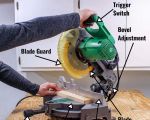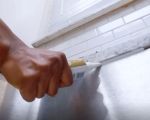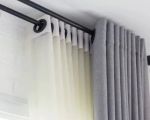The Best Wood Glue for DIY Projects
When it comes to DIY woodworking projects, choosing the right materials and tools is key to ensuring a successful outcome. One of the most critical materials you'll need is the right wood glue. Whether you’re building furniture, repairing a wooden item, or creating an art project, the right wood glue can make all the difference in the durability and finish of your work. I’ve learned over the years that selecting the best wood glue for your needs involves considering several factors, from strength to drying time and application ease.
1. Why Choosing the Right Wood Glue Matters
In any DIY woodworking project, a strong bond is the foundation of a successful outcome. Without the right glue, even the most intricate and well-thought-out designs can fall apart. The best wood glue helps to ensure that the pieces you’re working with stay securely joined, offering long-lasting durability and strength.
For instance, in a recent project of mine, I needed to repair a family heirloom chair that had a loose leg. Using a high-quality wood glue not only restored the chair’s stability but also ensured it could be used daily without worry. This example highlights why it’s so important to choose the best glue for the job: it contributes significantly to the overall stability and longevity of your work. Different glues work better for different projects, and understanding these distinctions can save you time, money, and frustration in the long run.
2. Factors to Consider When Choosing the Best Wood Glue
There’s no one-size-fits-all when it comes to wood glue. Depending on the specific needs of your project, you’ll want to consider several factors to ensure you’re selecting the best option. Here's what I always keep in mind when choosing the right wood glue:
- Strength: How strong is the bond? The glue should be durable enough to withstand the stresses placed on it by the project.
- Drying Time: Does the glue set quickly, or do you have more time to reposition the pieces? Fast-drying glues are ideal for smaller, quicker projects, but slow-setting glue can be helpful for precision work.
- Water Resistance: Will the finished product be exposed to moisture or varying temperatures? In this case, a waterproof glue is essential.
- Application Ease: Consider whether the glue is easy to apply, whether it clogs, and whether it’s easy to clean up after use.
3. Types of Wood Glue for Different Projects
Different types of wood glues are suited to different types of projects. As someone who frequently works on a variety of DIY projects, I’ve discovered that using the right type of glue can make a huge difference in the outcome of the project. Here’s a breakdown of some of the most popular wood glues and when you should use them:
- PVA (Polyvinyl Acetate) Glue: This is the most common type of wood glue and works well for most indoor woodworking projects. It dries clear, is easy to apply, and is perfect for basic joinery work like picture frames or small furniture pieces.
- Polyurethane Glue: For projects that require a stronger bond, especially for outdoor or damp environments, polyurethane glue is a great option. It expands as it dries, which helps to fill gaps between the wood, providing an incredibly strong bond.
- Epoxy Resin: Epoxy is ideal for wood repairs, especially for filling cracks or gaps. It is also resistant to water, heat, and other tough conditions, making it a great choice for outdoor furniture or any project that will be exposed to harsh elements.
- Hide Glue: Traditionally used in antique furniture restoration, hide glue provides a strong bond while allowing for easy disassembly if repairs are needed. It is ideal for fine woodworking and furniture restoration projects.
4. My Personal Favorite Wood Glue: Titebond III Ultimate Wood Glue
After years of experimenting with various wood glues for different projects, I have found that Titebond III Ultimate Wood Glue consistently outperforms others. This glue offers a strong initial bond and has a long open time, which is perfect for projects requiring precise alignment. I’ve used it for everything from assembling kitchen cabinets to crafting wooden signs, and it has never failed me.
What I love most about Titebond III is its water resistance, which makes it the go-to glue for both indoor and outdoor projects. Additionally, it is non-toxic, easy to clean up, and dries to a wood-like color, which is a bonus for projects where appearance matters. I highly recommend it for anyone looking for a reliable, versatile wood glue that can tackle a variety of projects.
5. How to Use Wood Glue for Best Results
Using wood glue may seem straightforward, but there are a few tips and tricks that I’ve learned over time to make sure you get the best results from your glue:
- Preparation is Key: Before applying glue, ensure the surfaces are clean and dust-free. This helps to create a strong bond between the pieces.
- Clamp the Pieces Together: Always clamp the pieces together while the glue dries. This ensures that the bond forms evenly and reduces the risk of weak spots.
- Don’t Overapply: Too much glue can make a mess and affect the strength of the bond. A small, even layer is all you need.
- Allow Sufficient Drying Time: Give the glue enough time to fully dry and cure. Rushing this step can result in a weaker bond, so follow the manufacturer's instructions for drying time.
6. Common Mistakes to Avoid When Using Wood Glue
As I’ve worked on various DIY woodworking projects, I’ve learned a few common mistakes to avoid when using wood glue:
- Not Using Enough Pressure: Proper pressure is key to forming a strong bond. Always ensure the glued pieces are held firmly together, either with clamps or weight.
- Not Choosing the Right Glue: Using the wrong glue for the type of wood or project can lead to a weak bond or a mess. Always choose the right glue for your specific needs.
- Not Cleaning Up Immediately: Wood glue dries quickly, and if you don’t clean up spills right away, they can be hard to remove. Use a damp cloth to wipe away any excess glue before it dries.
Conclusion: Choosing the Best Wood Glue for Your DIY Projects
Whether you’re a beginner or an experienced DIY enthusiast, choosing the right wood glue can make a world of difference in the quality and longevity of your projects. By considering factors such as strength, drying time, and application ease, you can select the best wood glue for any task. Titebond III, for example, has worked wonders in my own projects, and I recommend it for its versatility and strong, reliable bond.
If you're looking for more information on the best tools and materials for your next woodworking project, be sure to check out ToolNest for expert recommendations and the top-rated products to bring your ideas to life!









